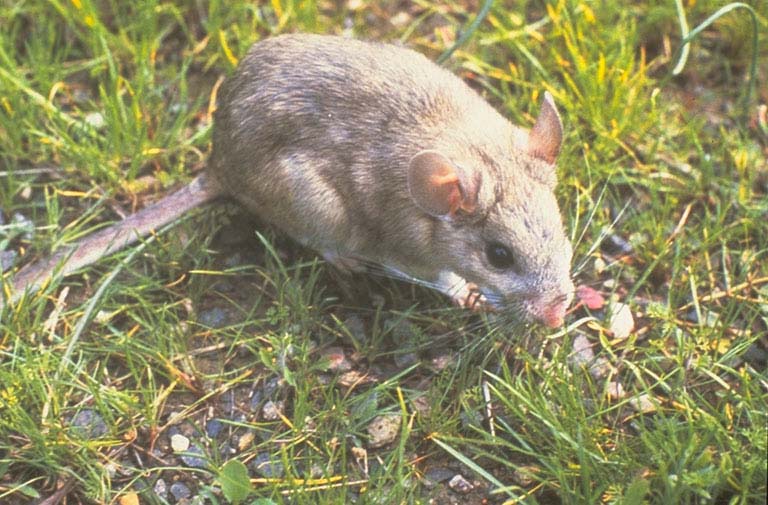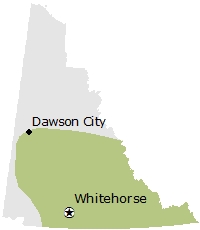
Name
- Common name: Bushy-tailed Woodrat
- Scientific name: Neotoma cinerea
- Order: Rodentia
- Family: Cricetidae
Also known as
Packrat
Viewing opportunities
- It is rare to catch a glimpse of this shy rodent. Rock climbers have the best chance of spotting them as they climb past middens in rock crevices.
Description
- Large black eyes; large, fur covered ears and long, abundant whiskers.
- Tail as long as the body.
- Colour can be grizzled brown, grey or pinkish.
- Looks like a giant deermouse.
Fast facts
- Length: 30 cm
- Weight: 590 g
- Lifespan: 2 years
- Predators: Owls, foxes, Black Bears, Coyotes, weasels, martens, and hawks
- Habitat: Boreal Forest
Conservation status
- Yukon: S3S4 (Vulnerable/Apparently Secure)
- Global: G5 (Secure)
Yukon population estimate
Not determined.
Behaviour
Bushy-tailed Woodrats are active throughout the year. They are nocturnal, solitary and very territorial. They mark their areas through scent markings and physical confrontations. Woodrats make middens of plant materials and feces which are solidified with crystallized urine. This nest is usually concealed in a rock crevice or by a pile of sticks.
Diet
Leaves of shrubs, conifer needles and seeds, berries, mushrooms, fruits, grasses, roots and bulbs.
Distribution

Sights and sounds

Woodrat track, front.

Woodrat track, hind.
Woodrats and people
- The Bushy-tailed Woodrat is the original “pack rat.” It has a strong preference for shiny objects and will drop almost anything it’s carrying in favour of something new.
- They are fond of taking up shelter in people’s sheds, greenhouses, and other unoccupied buildings, which sometimes makes them a nuisance.